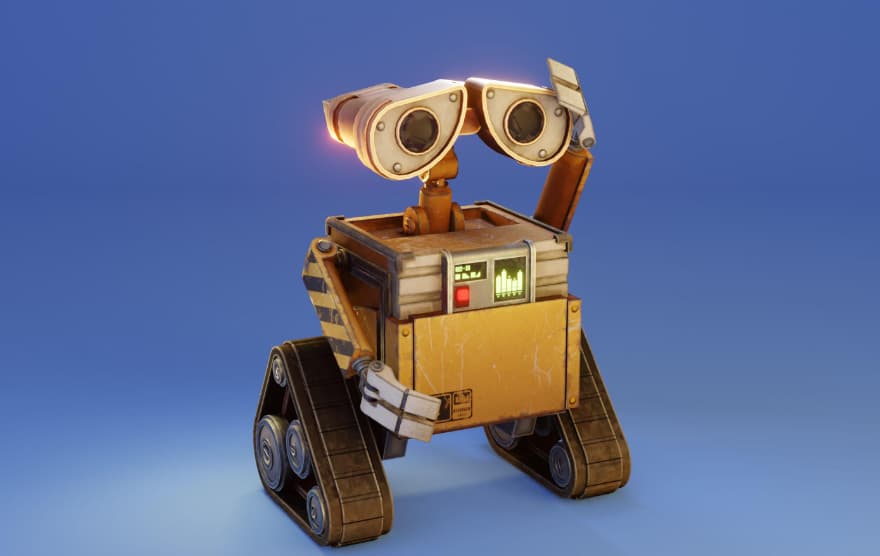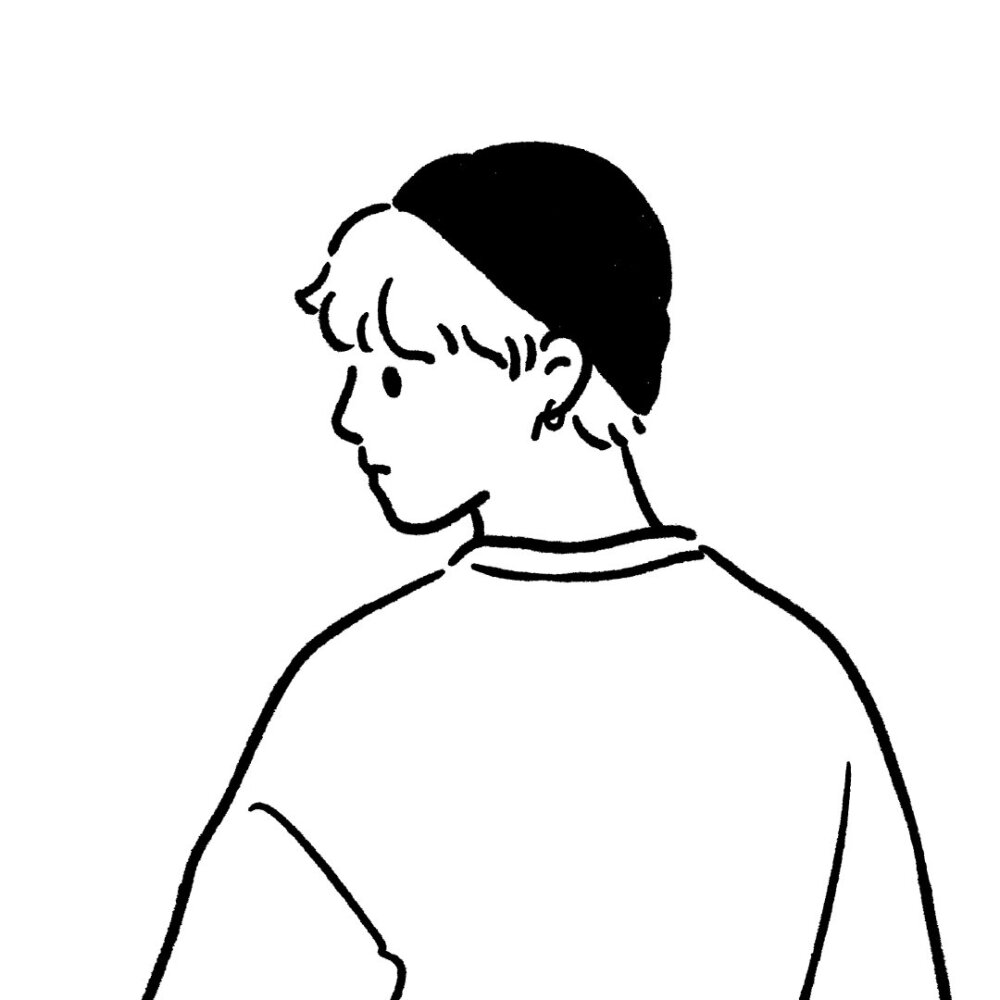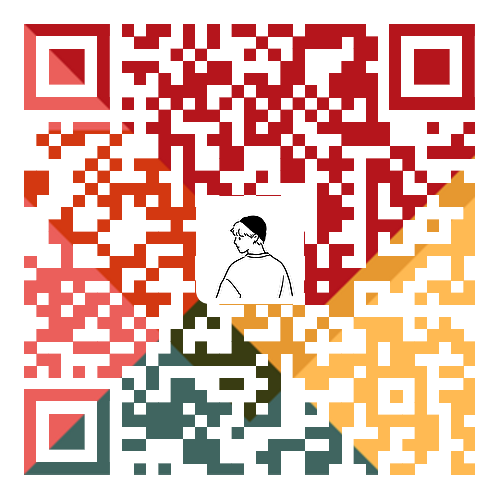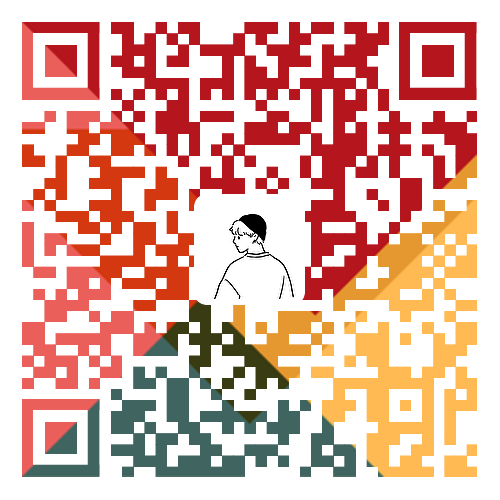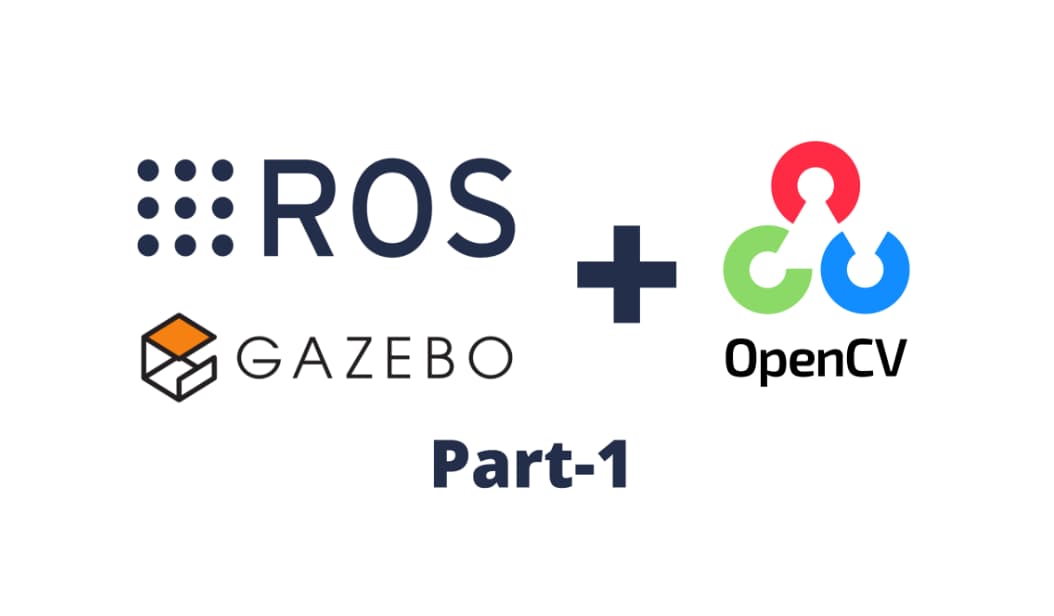URDF统一机器人建模语言 URDF(Unified Robot Description Format)统一机器人描述格式,URDF使用XML格式 描述机器人文件。
XML 是 被设计用来传输和存储数据的可扩展标记语言 ,注意语言本身是没有含义的,只是规定了其数据格式
比如说下面这段信息:
1 2 3 4 5 <robot name ="阿童木" > <link name ="大手臂" > 具体的描述</link > <joint name ="胳膊肘" > 具体的描述</joint > <link name ="小手臂" > 具体的描述</link > </robot >
在线代码格式化
XML格式注释: 标签: robot link
robot标签的属性 name : <robot name="fishbot"></robot>
robot标签的子标签 link : <robot name="fishbot"><link name="base_link"></link>link></robot>
使用XML定义的一个最简单的URDF模型可以像下面这样
1 2 3 4 5 6 7 8 9 10 <?xml version="1.0" ?> <robot name ="flowerbot" > <link name ="base_link" > <visual > <geometry > <cylinder length ="0.18" radius ="0.06" /> </geometry > </visual > </link > </robot >
接着我们从下面四个方面 介绍URDF:
URDF的组成介绍
URDF-Link介绍
URDF-Joint介绍
创建一个简单的URDF并在RVIZ2中可视化
URDF的组成介绍 一般情况下,URDF由声明信息 和两种关键组件 共同组成
声明信息 声明信息包含两部分,第一部分是xml的声明信息 ,放在第一行 第二部分是机器人的声明 ,通过robot标签就可以声明一个机器人模型
1 2 3 4 5 6 <?xml version="1.0" ?> <robot name ="flowerbot" > <link > </link > <joint > </joint > ...... </robot >
两种关键组件(Joint&Link) 以平衡车为例,可以简化为如下五个部件组成
我们把左轮,右轮、支撑轮子,IMU和雷达部件称为机器人的Link
Link和Link之间的连接部分称之为Joint关节
Link介绍 通过link标签即可声明一个link, 属性name指定部件名字
1 2 3 <link name ="base_link" > </link >
通过两行代码就可以定义好base_link ,但现在的base_link 是空的,我们还要声明我们的base_link长什么样,通过visual子标签 就可以声明出来机器人的visual形状。
1 2 3 4 5 6 7 8 9 <link name ="base_link" > <visual > <origin xyz ="0 0 0.0" rpy ="0 0 0" /> <geometry > <cylinder length ="0.12" radius ="0.10" /> </geometry > </visual > </link >
link标签定义 link的子标签列表
visual 显示形状
<geometry> (几何形状)
<box> 长方体
标签属性: size - 长宽高
举例:<box size="1 1 1" />
<cylinder> 圆柱体
标签属性: radius - 半径 length - 高度
举例:<cylinder radius="1" length="0.5"/>
sphere 球体
属性:radius - 半径
举例:<sphere radius="0.015"/>
mesh 第三方导出的模型文件
属性:filename
举例: <mesh filename="package://robot_description/meshes/base_link.DAE"/>
origin (可选:默认在物体几何中心)
属性 xyz默认为零矢量 rpy弧度表示的翻滚、俯仰、偏航
举例:<origin xyz="0 0 0" rpy="0 0 0" />
material 材质
属性 name 名字
color
属性 rgba a代表透明度
举例:<material name="white"><color rgba="1.0 1.0 1.0 0.5" /> </material>
collision 碰撞属性
inertial 惯性参数 质量等
Joint介绍 joint为机器人关节 ,机器人关节用于连接两个机器人部件 ,主要写明父子关系
父子之间的连接类型,包括是否固定的,可以旋转的等
父部件名字
子部件名字
父子之间相对位置
父子之间的旋转轴,绕哪个轴转
比如我们再建立一个雷达部件laser_link ,然后将laser_link 固定到base_link
1 2 3 4 5 6 7 8 9 10 11 12 13 14 15 16 17 18 19 20 21 22 23 24 25 26 27 28 29 30 31 32 33 34 <?xml version="1.0" ?> <robot name ="fishbot" > <link name ="base_link" > <visual > <origin xyz ="0 0 0.0" rpy ="0 0 0" /> <geometry > <cylinder length ="0.12" radius ="0.10" /> </geometry > </visual > </link > <link name ="laser_link" > <visual > <origin xyz ="0 0 0" rpy ="0 0 0" /> <geometry > <cylinder length ="0.02" radius ="0.02" /> </geometry > <material name ="black" > <color rgba ="0.0 0.0 0.0 0.5" /> </material > </visual > </link > <joint name ="laser_joint" type ="fixed" > <parent link ="base_link" /> <child link ="laser_link" /> <origin xyz ="0 0 0.075" /> </joint > </robot >
joint标签详解 joint属性
name 关节的名称
type 关节的类型
revolute: 旋转关节,绕单轴旋转,角度有上下限,比如舵机0-180
continuous: 旋转关节,可以绕单轴无限旋转,比如自行车的前后轮
fixed: 固定关节,不允许运动的特殊关节
prismatic: 滑动关节,沿某一轴线移动的关节,有位置极限
planer: 平面关节,允许在xyz,rxryrz六个方向运动
floating: 浮动关节,允许进行平移、旋转运动
joint的子标签
parent 父link名称
<parent link="base_link" />
child子link名称
<child link="laser_link" />
origin 父子之间的关系xyz rpy
<origin xyz="0 0 0.014" />
axis 围绕旋转的关节轴
<axis xyz="0 0 1" />
RVIZ2可视化移动机器人模型 URDF可视化的步骤如下:
建立机器人描述功能包
建立urdf 文件夹编写urdf文件
建立launch 文件夹,编写launch文件
修改setup.py 配置,编译测试
建立功能包 轻车熟路,先创建一个chapt8_ws 工作空间,然后建立功能包,包的类型选ament_python
1 ros2 pkg create fishbot_description --build-type ament_python
建立URDF文件 建立URDF文件夹,创建urdf文件
1 2 cd fishbot_description && mkdir urdf touch fishbot_base.urdf
完成后src下的目录结构:
1 2 3 4 5 6 7 ├── fishbot_description │ ├── __init__.py ├── package.xml ├── setup.cfg ├── setup.py └── urdf └── fishbot_base.urdf
编辑fishbot_base.urdf
1 2 3 4 5 6 7 8 9 10 11 12 13 14 15 16 17 18 19 20 21 22 23 24 25 26 27 28 29 30 31 32 33 34 <?xml version="1.0" ?> <robot name ="fishbot" > <link name ="base_link" > <visual > <origin xyz ="0 0 0.0" rpy ="0 0 0" /> <geometry > <cylinder length ="0.12" radius ="0.10" /> </geometry > </visual > </link > <link name ="laser_link" > <visual > <origin xyz ="0 0 0" rpy ="0 0 0" /> <geometry > <cylinder length ="0.02" radius ="0.02" /> </geometry > <material name ="black" > <color rgba ="0.0 0.0 0.0 0.8" /> </material > </visual > </link > <joint name ="laser_joint" type ="fixed" > <parent link ="base_link" /> <child link ="laser_link" /> <origin xyz ="0 0 0.075" /> </joint > </robot >
建立launch文件 在目录src/fishbot_description 下创建launch 文件夹并在其下新建display_rviz2.launch.py 文件
1 2 mkdir launch touch display_rviz2.launch.py
完成后的目录结构:
1 2 3 4 5 6 7 8 9 ├── fishbot_description │ ├── __init__.py ├── launch │ └── display_rviz2.launch.py ├── package.xml ├── setup.cfg ├── setup.py └── urdf └── fishbot_base.urdf
1 2 3 4 5 6 7 8 9 10 11 12 13 14 15 16 17 18 19 20 21 22 23 24 25 26 27 28 29 30 31 32 33 34 35 36 37 38 39 40 import osfrom launch import LaunchDescriptionfrom launch.substitutions import LaunchConfigurationfrom launch_ros.actions import Nodefrom launch_ros.substitutions import FindPackageSharedef generate_launch_description (): package_name = 'fishbot_description' urdf_name = "fishbot_base.urdf" ld = LaunchDescription() pkg_share = FindPackageShare(package=package_name).find(package_name) urdf_model_path = os.path.join(pkg_share, f'urdf/{urdf_name} ' ) robot_state_publisher_node = Node( package='robot_state_publisher' , executable='robot_state_publisher' , arguments=[urdf_model_path] ) joint_state_publisher_node = Node( package='joint_state_publisher_gui' , executable='joint_state_publisher_gui' , name='joint_state_publisher_gui' , arguments=[urdf_model_path] ) rviz2_node = Node( package='rviz2' , executable='rviz2' , name='rviz2' , output='screen' , ) ld.add_action(robot_state_publisher_node) ld.add_action(joint_state_publisher_node) ld.add_action(rviz2_node) return ld
想要可视化模型需要三个节点参与
joint_state_publisher_gui 负责发布机器人关节数据信息,通过joint_states 话题发布robot_state_publisher_node 负责发布机器人模型信息robot_description ,并将joint_states数据转换tf信息发布rviz2_node 负责显示机器人的信息
这里我们用到了joint_state_publisher_gui 和robot_state_publisher 两个包,如果你的系统没有安装这两个包,可以手动安装:
1 sudo apt install ros-$ROS_DISTRO-joint-state-publisher-gui ros-$ROS_DISTRO-robot-state-publisher
joint_state_publisher_gui ,还有一个兄弟叫做joint_state_publisher 两者区别在于joint_state_publisher_gui 运行起来会跳出一个界面,通过界面可以操作URDF中能动的关节
修改setup.py 导入头文件
1 2 from glob import globimport os
加入目录安装
1 2 3 ('share/ament_index/resource_index/packages' , ['resource/' + package_name]), ('share/' + package_name, ['package.xml' ]),
完整
1 2 3 4 5 6 7 8 9 10 11 12 13 14 15 16 17 18 19 20 21 22 23 24 25 26 27 28 29 30 31 from setuptools import find_packages, setupfrom glob import globimport ospackage_name = 'fishbot_description' setup( name=package_name, version='0.0.0' , packages=find_packages(exclude=['test' ]), data_files=[ ('share/ament_index/resource_index/packages' , ['resource/' + package_name]), ('share/' + package_name, ['package.xml' ]), ('share/ament_index/resource_index/packages' , ['resource/' + package_name]), ('share/' + package_name, ['package.xml' ]), ], install_requires=['setuptools' ], zip_safe=True , maintainer='shios' , maintainer_email='shios@todo.todo' , description='TODO: Package description' , license='TODO: License declaration' , tests_require=['pytest' ], entry_points={ 'console_scripts' : [ ], }, )
编译测试 编译
运行测试
1 2 source install/setup.bash ros2 launch fishbot_description display_rviz2.launch.py
添加robotmodel模块,分别选择link名称如下,即可看到机器人的模型显示
创建一个两轮差速模型 机器人除了雷达之外,还需要IMU加速度传感器 以及可以驱动的轮子 ,所以我们还需要再创建两个差速驱动轮和一个支撑轮。
IMU传感器部件与关节
左轮子部件与关节
右轮子部件与关节
支撑轮子部件与关节
添加IMU传感器 修改颜色 透明度修改只需要在base_link 中添加material
1 2 3 4 5 6 7 8 9 10 11 <link name ="base_link" > <visual > <origin xyz ="0 0 0.0" rpy ="0 0 0" /> <geometry > <cylinder length ="0.12" radius ="0.10" /> </geometry > <material name ="blue" > <color rgba ="0.1 0.1 1.0 0.5" /> </material > </visual > </link >
添加imu 1 2 3 4 5 6 7 8 9 10 11 12 13 14 15 <link name ="imu_link" > <visual > <origin xyz ="0 0 0.0" rpy ="0 0 0" /> <geometry > <box size ="0.02 0.02 0.02" /> </geometry > </visual > </link > <joint name ="imu_joint" type ="fixed" > <parent link ="base_link" /> <child link ="imu_link" /> <origin xyz ="0 0 0.02" /> </joint >
添加右轮 添加关节 关节名称为right_wheel_link
轮子的宽为4cm,直径为6.4cm,几何形状是个圆柱体,所以geometry 配置如下:
1 2 3 <geometry > <cylinder length ="0.04" radius ="0.032" /> </geometry >
需要注意的是,圆柱默认的朝向是向上的
我们可通过origin 的rpy 改变轮子的旋转角度,让其绕x轴 旋转pi/2 ,所以origin 的配置为
1 <origin xyz ="0 0 0" rpy ="1.57079 0 0" />
颜色换黑色,可以得到下面的配置:
1 2 3 4 5 6 7 8 9 10 11 <link name ="right_wheel_link" > <visual > <origin xyz ="0 0 0" rpy ="1.57079 0 0" /> <geometry > <cylinder length ="0.04" radius ="0.032" /> </geometry > <material name ="black" > <color rgba ="0.0 0.0 0.0 0.5" /> </material > </visual > </link >
添加joint 我们把左轮子的中心固定在机器人左后方
需要注意的是origin 和axis 值的设置
先看origin
因为base_link的高度是0.12,我们
z表示child相对parent的z轴上的关系,想将轮子固定在机器人的下表面,所以origin的z向下偏移0.12/2=0.06m(向下符号为负)
y表示child相对parent的y轴上的关系,base_link的半径是0.10,所以我们让轮子的y轴向负方向偏移0.10m(向左符号为负)
x表示child相对parent的x轴上的关系,向后偏移则是x轴向后进行偏移,我们用个差不多的值0.02m(向后符号为负)
再看axis
轮子是会转动的,那应该按照哪个轴转动呢?从上图可以看出是绕着y轴的逆时针方向,所以axis的设置为:
1 2 3 4 5 6 <joint name ="right_wheel_joint" type ="continuous" > <parent link ="base_link" /> <child link ="right_wheel_link" /> <origin xyz ="-0.02 -0.10 -0.06" /> <axis xyz ="0 1 0" /> </joint >
添加左轮 左轮就是右轮的映射,不再赘述
1 2 3 4 5 6 7 8 9 10 11 12 13 14 15 16 17 18 <link name ="left_wheel_link" > <visual > <origin xyz ="0 0 0" rpy ="1.57079 0 0" /> <geometry > <cylinder length ="0.04" radius ="0.032" /> </geometry > <material name ="black" > <color rgba ="0.0 0.0 0.0 0.5" /> </material > </visual > </link > <joint name ="left_wheel_joint" type ="continuous" > <parent link ="base_link" /> <child link ="left_wheel_link" /> <origin xyz ="-0.02 0.10 -0.06" /> <axis xyz ="0 1 0" /> </joint >
添加支撑轮 支撑轮子固定在机器人的前方,用个球体,半径用0.016m ,小球的直径为0.032m与左右轮子半径相同,然后向下偏移0.016+0.06=0.076m ,向下值为负,同时把支撑论向前移动一些,选个0.06m
1 2 3 4 5 6 7 8 9 10 11 12 13 14 15 16 17 <link name ="caster_link" > <visual > <origin xyz ="0 0 0" rpy ="0 0 0" /> <geometry > <sphere radius ="0.016" /> </geometry > <material name ="black" > <color rgba ="0.0 0.0 0.0 0.5" /> </material > </visual > </link > <joint name ="caster_joint" type ="fixed" > <parent link ="base_link" /> <child link ="caster_link" /> <origin xyz ="0.06 0.0 -0.076" /> </joint >
最终URDF文件
1 2 3 4 5 6 7 8 9 10 11 12 13 14 15 16 17 18 19 20 21 22 23 24 25 26 27 28 29 30 31 32 33 34 35 36 37 38 39 40 41 42 43 44 45 46 47 48 49 50 51 52 53 54 55 56 57 58 59 60 61 62 63 64 65 66 67 68 69 70 71 72 73 74 75 76 77 78 79 80 81 82 83 84 85 86 87 88 89 90 91 92 93 94 95 96 97 98 99 100 101 102 103 104 105 106 107 108 109 110 111 112 113 <?xml version="1.0" ?> <robot name ="fishbot" > <link name ="base_link" > <visual > <origin xyz ="0 0 0.0" rpy ="0 0 0" /> <geometry > <cylinder length ="0.12" radius ="0.10" /> </geometry > <material name ="blue" > <color rgba ="0.1 0.1 1.0 0.5" /> </material > </visual > </link > <link name ="laser_link" > <visual > <origin xyz ="0 0 0" rpy ="0 0 0" /> <geometry > <cylinder length ="0.02" radius ="0.02" /> </geometry > <material name ="black" > <color rgba ="0.0 0.0 0.0 0.5" /> </material > </visual > </link > <joint name ="laser_joint" type ="fixed" > <parent link ="base_link" /> <child link ="laser_link" /> <origin xyz ="0 0 0.075" /> </joint > <link name ="imu_link" > <visual > <origin xyz ="0 0 0.0" rpy ="0 0 0" /> <geometry > <box size ="0.02 0.02 0.02" /> </geometry > </visual > </link > <joint name ="imu_joint" type ="fixed" > <parent link ="base_link" /> <child link ="imu_link" /> <origin xyz ="0 0 0.02" /> </joint > <link name ="left_wheel_link" > <visual > <origin xyz ="0 0 0" rpy ="1.57079 0 0" /> <geometry > <cylinder length ="0.04" radius ="0.032" /> </geometry > <material name ="black" > <color rgba ="0.0 0.0 0.0 0.5" /> </material > </visual > </link > <joint name ="left_wheel_joint" type ="continuous" > <parent link ="base_link" /> <child link ="left_wheel_link" /> <origin xyz ="-0.02 0.10 -0.06" /> <axis xyz ="0 1 0" /> </joint > <link name ="right_wheel_link" > <visual > <origin xyz ="0 0 0" rpy ="1.57079 0 0" /> <geometry > <cylinder length ="0.04" radius ="0.032" /> </geometry > <material name ="black" > <color rgba ="0.0 0.0 0.0 0.5" /> </material > </visual > </link > <joint name ="right_wheel_joint" type ="continuous" > <parent link ="base_link" /> <child link ="right_wheel_link" /> <origin xyz ="-0.02 -0.10 -0.06" /> <axis xyz ="0 1 0" /> </joint > <link name ="caster_link" > <visual > <origin xyz ="0 0 0" rpy ="1.57079 0 0" /> <geometry > <sphere radius ="0.016" /> </geometry > <material name ="black" > <color rgba ="0.0 0.0 0.0 0.5" /> </material > </visual > </link > <joint name ="caster_joint" type ="fixed" > <parent link ="base_link" /> <child link ="caster_link" /> <origin xyz ="0.06 0.0 -0.076" /> <axis xyz ="0 1 0" /> </joint > </robot >
测试运行 编译测试 1 2 3 colcon build source install/setup.bash ros2 launch fishbot_description display_rviz2.launch.py
最终结果
打印joint_states 话题
1 ros2 topic echo /joint_states
通过joint_state_gui 改变关节tf中关节角度
在JointStatePublisher中,拖动滑动条,观察
rviz2中tf的变换
joint_states中的值的变换
论如何让车轮着地? 在RVIZ中的机器人轮子是在地面之下的,原因在于我们fixed-frame 选择的是base_link ,base_link的位置本来就在left_wheel_link 和right_wheel_link 之上,那该怎么办呢?
增加一个虚拟link和关节,这个关节与base_link相连,位置位于base_link向下刚好到车轮下表面的位置
来,让我们给base_link添加一个父link-base_footprint ,新增的URDF代码如下:
1 2 3 4 5 6 7 8 <link name ="base_footprint" /> <joint name ="base_joint" type ="fixed" > <parent link ="base_footprint" /> <child link ="base_link" /> <origin xyz ="0.0 0.0 0.076" rpy ="0 0 0" /> </joint >
因为是虚拟关节,我们不用对这个link的形状进行描述,joint的origin设置为**xyz=”0.0 0.0 0.076”**表示关节base_footprint向上0.076就是base_link
控制移动机器人轮子运动 我们需要自己编写节点,取代joint_state_publisher 发送关节位姿给robot_state_pubsher ,robot_state_publisher 发送tf控制机器人的关节转动。
新建节点
创建发布者
编写发布逻辑
编译测试
新建节点 方便起见,我们就在fishbot_describle包中新建节点
1 touch fishbot_description/fishbot_description/rotate_wheel.py
1 2 3 4 5 6 7 8 9 10 11 12 13 14 15 16 17 18 19 20 21 22 23 import rclpyfrom rclpy.node import Nodeclass RotateWheelNode (Node ): def __init__ (self,name ): super ().__init__(name) self.get_logger().info(f"node {name} init.." ) def main (args=None ): """ ros2运行该节点的入口函数 1. 导入库文件 2. 初始化客户端库 3. 新建节点 4. spin循环节点 5. 关闭客户端库 """ rclpy.init(args=args) node = RotateWheelNode("rotate_fishbot_wheel" ) rclpy.spin(node) rclpy.shutdown()
配置下setup.py
1 2 3 4 5 entry_points={ 'console_scripts' : [ "rotate_wheel= fishbot_description.rotate_wheel:main" ], },
编译运行
1 2 3 colcon build source install/setup.bash ros2 run fishbot_description rotate_wheel
创建发布者 创建发布者之前,要知道robot_state_pubsher 所订阅的话题类型是什么?
1 ros2 topic info /joint_states
1 2 3 Type: sensor_msgs/msg/JointState Publisher count: 1 Subscription count: 1
1 ros2 interfaces show sensor_msgs/msg/JointState
1 2 3 4 5 6 7 8 9 10 11 12 13 14 15 16 17 18 19 20 21 22 23 24 25 # This is a message that holds data to describe the state of a set of torque controlled joints. # # The state of each joint (revolute or prismatic) is defined by: # * the position of the joint (rad or m), # * the velocity of the joint (rad/s or m/s) and # * the effort that is applied in the joint (Nm or N). # # Each joint is uniquely identified by its name # The header specifies the time at which the joint states were recorded. All the joint states # in one message have to be recorded at the same time. # # This message consists of a multiple arrays, one for each part of the joint state. # The goal is to make each of the fields optional. When e.g. your joints have no # effort associated with them, you can leave the effort array empty. # # All arrays in this message should have the same size, or be empty. # This is the only way to uniquely associate the joint name with the correct # states. std_msgs/Header header string[] name float64[] position float64[] velocity float64[] effort
知道了话题类型,我们就可以来创建发布者了.
1 2 3 4 5 6 7 8 9 10 11 12 import rclpyfrom rclpy.node import Nodefrom sensor_msgs.msg import JointStateclass RotateWheelNode (Node ): def __init__ (self,name ): super ().__init__(name) self.get_logger().info(f"node {name} init.." ) self.pub_joint_states_ = self.create_publisher(JointState,"joint_states" , 10 )
编写发布逻辑 多线程定频发布Rate 为了能够一直循环使用rate,我们单独开一个线程用于发布joint_states话题数据,在ROS2程序中单独开线程进行话题发布的方法为:
1 2 3 4 5 6 7 8 9 10 11 12 13 14 15 import threadingfrom rclpy.node import Nodeclass RotateWheelNode (Node ): def __init__ (self ): self.pub_rate = self.create_rate(5 ) self.thread_ = threading.Thread(target=self._thread_pub) self.thread_.start() def _thread_pub (self ): while rclpy.ok(): self.pub_rate.sleep()
构造发布数据 接着我们来构造发布的数据:
joint_states 有一个头和四个数组需要赋值(可通过ros2 interface 指令查询)
1 2 3 4 5 std_msgs/Header header string[] name float64[] position float64[] velocity float64[] effort
1 2 3 4 5 6 7 8 9 10 11 12 13 14 15 16 17 18 19 20 21 22 string[] name float64[] position float64[] velocity float64[] effort
name name 是关节的名称,要与urdf中的定义的关节名称相同,根据我们的URDF定义有
1 self.joint_states.name = ['left_wheel_joint' ,'right_wheel_joint' ]
position 表示关节转动的角度值,因为关节类型为continuous ,所以其值无上下限制,初始值赋值为0.0
1 2 self.joint_states.position = [0.0 ,0.0 ]
我们采用速度控制机器人轮子转动,所以机器人的位置更新则可以通过下面式子计算得出
某一段时间内轮子转动的角度 = (当前时刻-上一时刻)* 两个时刻之间的轮子转速
1 2 3 4 delta_time = time.time()-last_update_time self.joint_states.position[0 ] += delta_time*self.joint_states.velocity[0 ] self.joint_states.position[1 ] += delta_time*self.joint_states.velocity[1 ]
velocity 因为我们采用速度进行控制,所以对外提供一个速度更改接口。
1 2 def update_speed (self,speeds ): self.joint_speeds = speeds
完成后代码 1 2 3 4 5 6 7 8 9 10 11 12 13 14 15 16 17 18 19 20 21 22 23 24 25 26 27 28 29 30 31 32 33 34 35 36 37 38 39 40 41 42 43 44 45 46 47 48 49 50 51 52 53 54 55 56 57 58 59 60 61 62 import rclpyfrom rclpy.node import Nodefrom sensor_msgs.msg import JointStateimport threadingimport timeclass RotateWheelNode (Node ): def __init__ (self,name ): super ().__init__(name) self.get_logger().info(f"node {name} init.." ) self.joint_states_publisher_ = self.create_publisher(JointState,"joint_states" , 10 ) self._init_joint_states() self.pub_rate = self.create_rate(30 ) self.thread_ = threading.Thread(target=self._thread_pub) self.thread_.start() def _init_joint_states (self ): self.joint_speeds = [0.0 ,0.0 ] self.joint_states = JointState() self.joint_states.header.stamp = self.get_clock().now().to_msg() self.joint_states.header.frame_id = "" self.joint_states.name = ['left_wheel_joint' ,'right_wheel_joint' ] self.joint_states.position = [0.0 ,0.0 ] self.joint_states.velocity = self.joint_speeds self.joint_states.effort = [] def update_speed (self,speeds ): self.joint_speeds = speeds def _thread_pub (self ): last_update_time = time.time() while rclpy.ok(): delta_time = time.time()-last_update_time last_update_time = time.time() self.joint_states.position[0 ] += delta_time*self.joint_states.velocity[0 ] self.joint_states.position[1 ] += delta_time*self.joint_states.velocity[1 ] self.joint_states.velocity = self.joint_speeds self.joint_states.header.stamp = self.get_clock().now().to_msg() self.joint_states_publisher_.publish(self.joint_states) self.pub_rate.sleep() def main (args=None ): rclpy.init(args=args) node = RotateWheelNode("rotate_fishbot_wheel" ) node.update_speed([15.0 ,-15.0 ]) rclpy.spin(node) rclpy.shutdown()
编译测试 编译程序
1 2 colcon build --packages-select fishbot_description source install/setup.bash
此时运行关节数据发布节点
1 ros2 run fishbot_description rotate_wheel
测试之前还需要修改下display_rviz2.launch.py 文件,注释其joint_state_publisher 节点
1 2 3 # ld.add_action(joint_state_publisher_node) ld.add_action(robot_state_publisher_node) ld.add_action(rviz2_node)
先运行rviz和robot_state_publisher
1 2 source install/setup.bash ros2 launch fishbot_description display_rviz2.launch.py
观察此时rviz界面 ,可以看到轮子疯狂转动
